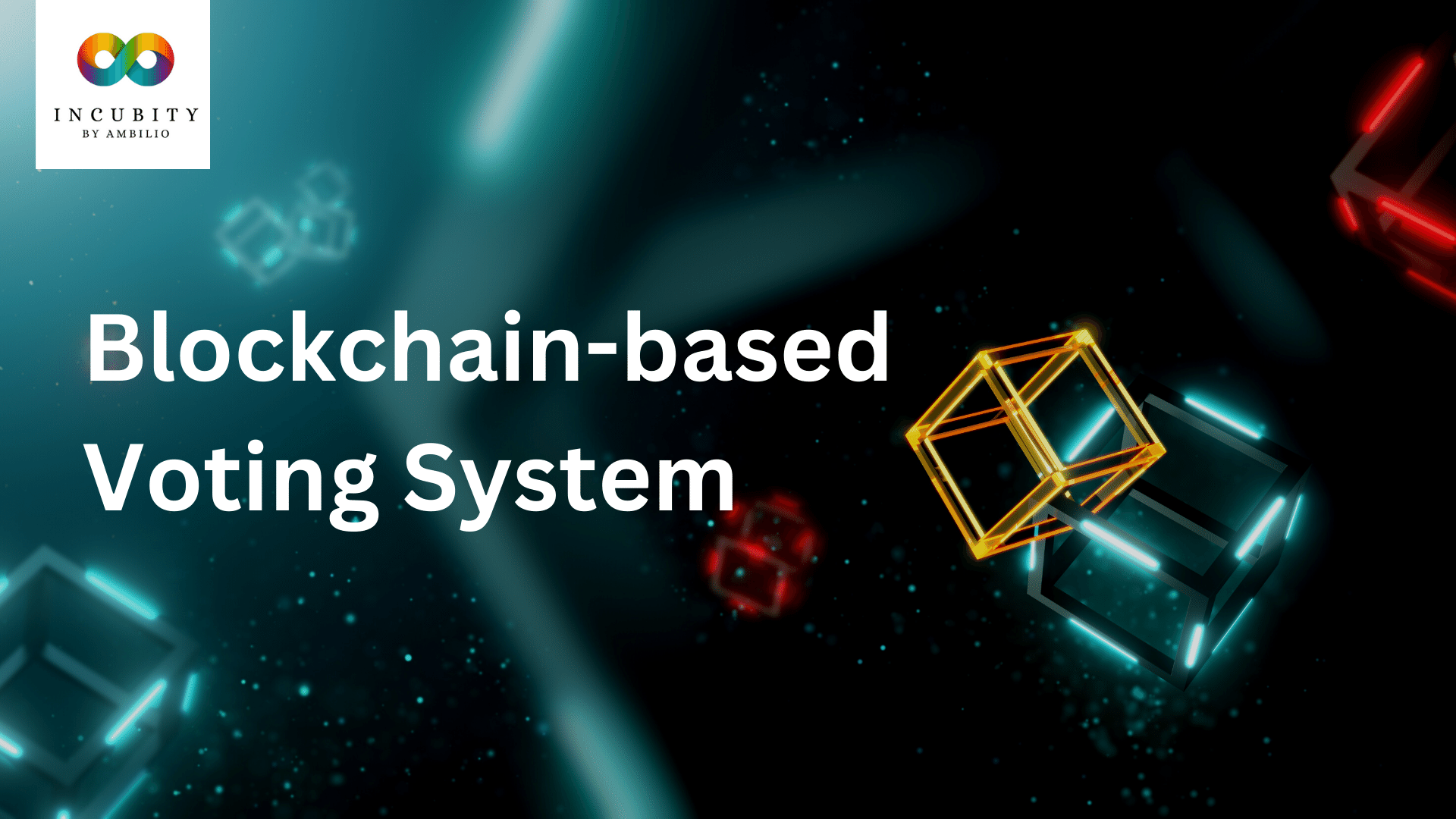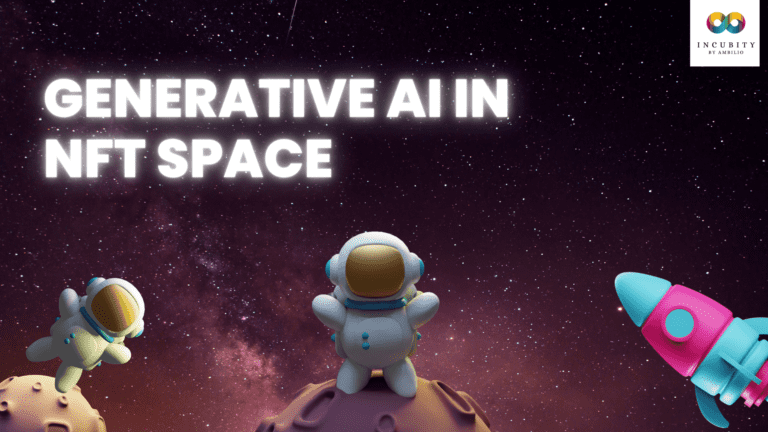Blockchain-based voting systems are gaining popularity due to their ability to provide secure, transparent, and decentralized voting platforms. However, ensuring the integrity and authenticity of votes is a challenging task. Digital Signature Algorithm (DSA) is a type of asymmetric cryptography that uses a pair of keys to provide a secure and authentic way of verifying digital messages or transactions. In this article, we explore the importance of using DSA in a blockchain-based voting system to enhance its security and authenticity. We provide a Python code example for generating and verifying digital signatures and examine real-world use cases of DSA in blockchain-based voting systems.
By incorporating DSA in a blockchain-based voting system, governments and organizations can provide citizens with a reliable and trustworthy voting experience, ensuring the integrity of their democratic process while maintaining the privacy of voters’ identities and votes.
Background
Traditional voting systems have been used for centuries, however, they have several limitations. One of the main issues with traditional voting systems is the lack of transparency and accountability. The centralized nature of traditional voting systems makes it difficult to verify the authenticity of votes, and there is often no way to trace the votes back to the voter. This lack of transparency can lead to mistrust in the democratic process and can undermine the legitimacy of election results. Additionally, traditional voting systems can be vulnerable to fraud, tampering, and other forms of corruption.
Blockchain technology provides a solution to these problems by creating a secure and decentralized system that eliminates the need for a central authority to manage the voting process. A blockchain-based voting system is essentially a distributed ledger that records votes securely and transparently. Each vote is encrypted and recorded on a block, which is then added to the chain, making it virtually impossible to alter the record of the vote without detection.
The decentralized nature of a blockchain-based voting system ensures that there is no central authority that can manipulate the results of the election. Each node in the network has a copy of the blockchain and can verify the integrity of the votes. This transparency provides citizens with confidence in the democratic process and can lead to increased participation in the electoral process.
Another benefit of blockchain-based voting systems is the enhanced security they provide. The encryption of each vote and the decentralized nature of the blockchain make it difficult for hackers to manipulate the voting process. In traditional voting systems, a single point of failure can compromise the entire system, but with a blockchain-based voting system, the distributed nature of the system ensures that no single node can compromise the integrity of the vote.
Finally, blockchain-based voting systems offer greater privacy to voters. Voters can cast their votes anonymously, without fear of retaliation or discrimination. This anonymity is important for protecting the privacy of voters and ensuring that they feel comfortable casting their votes.
How DSA Works in a Blockchain-Based Voting System
In a blockchain-based voting system, the use of the Digital Signature Algorithm is essential for ensuring the security, privacy, and authenticity of votes. DSA is an asymmetric cryptography that uses a pair of keys, a public key, and a private key, to provide a secure way of verifying digital messages or transactions.
To use DSA in a blockchain-based voting system, each eligible voter must have a private key and a public key. The private key is kept secret and is used to create a digital signature for each vote. The public key is shared with the blockchain network and is used to verify the digital signature. When a voter casts a vote, they use their private key to sign the vote and create a unique digital signature. The signature, the voter’s public key, and the vote itself is then sent to the blockchain network. The blockchain network checks the digital signature using the voter’s public key to ensure that it was indeed signed by the voter and has not been tampered with. If the signature is valid, the vote is recorded in the blockchain, and the network confirms its authenticity. The use of DSA in a blockchain-based voting system provides strong security and verifiability, ensuring that each vote is genuine and that no fraudulent votes are counted.
The need for DSA in a blockchain-based voting system arises from the fact that votes need to be authenticated to ensure that only eligible voters are participating in the voting process. This is achieved by using the voter’s private key to digitally sign their vote, which is then validated using the voter’s public key. This helps to ensure that only the actual voter is able to cast their vote and that their vote has not been tampered with.
The benefits of using DSA in a blockchain-based voting system are numerous. DSA helps to maintain the privacy of voters by ensuring that only the voter’s public key is visible on the blockchain, while their private key remains securely stored on their device. Also, it helps to ensure that the voting system is secure, as each vote is uniquely encrypted using the voter’s private key, making it virtually impossible for anyone to alter or manipulate the vote.
Moreover, DSA helps to ensure the authenticity of votes by allowing for easy verification of the voter’s identity and their vote. Each digital signature is unique to the voter, and their vote can be verified by using the voter’s public key to decrypt the signature. This provides a secure and transparent method of vote counting, where anyone can verify the authenticity of each vote.
To sum it up, DSA plays a crucial role in ensuring the security, privacy, and authenticity of a blockchain-based voting system. By using DSA, voting systems can be designed to be more secure, transparent, and trustworthy, providing citizens with an efficient and reliable way to exercise their democratic rights.
Hands-on Digital Signature Algorithm
In this section, we’ll show how DSA can be implemented using Python. We’ll start by generating keys and creating digital signatures, and then we’ll show how to verify digital signatures. This code example is very basic and the aim of it is to familiarize you with the work of the algorithm, so although the following code implements the algorithm, the real-life uses of it are more complicated.
The example will feature an election in a company. Several employees are involved in the process of voting for either ‘Alice’ or ‘Bob’, the two candidates to get the manager’s position. The following code will explain the process of creating a digital signature, along with the process of verifying it to make sure it is authentic.
Let’s start our code by importing the required libraries:
| from Crypto.PublicKey import DSA from Crypto.Signature import DSS from Crypto.Hash import SHA256 |
As we see, we will mainly use the Crypto library. Its DSA class takes care of generating keys, its DSS class is the signature class, and the SHA256 is the algorithm we will use for hashing.
| keys = DSA.generate(2048) publicKey = keys.publickey().export_key() privateKey = keys.export_key() |
Here we generate a new DSA key pair with 2048 bits of security, and store them in the variable ‘keys’.Then we export the public and private keys to bytes objects so that they can be easily transmitted over a network or stored in a file if needed.
| vote = b’Alice’ hashed_vote = SHA256.new(vote) privateKeyObj = DSA.import_key(privateKey) signer = DSS.new(privateKeyObj, ‘fips-186-3’) signature = signer.sign(hashed_vote) print(“Signature: “, signature) |
Signature: b”*\xd5g\xbf\xcf\x1bMN\x01Q\x02\x87\xba\x17\xbf:\x0f\r\x10\xc5\xd7\xb0\xea0\x1e\xe3\x1bP\x89\x8b\xe6TPp$\t/J\xd1\xe9\x88s#\xaao(\xb0\x1c`&\xac\x1a’\x04\x81\xc2″
At this step, we are going to see what happens when an employee decides to vote for ‘Alice’. We first store the vote in a variable called ‘vote’ as a byte string. This way, we are treating the string ‘Alice’ as a sequence of bytes, rather than as a sequence of characters. This ensures that the message is encoded correctly and produces a consistent digest when hashed using the SHA-256 algorithm.
After hashing the ‘vote’ with the SHA256 Algorithm, we import the private key as a key object, and use it to sign the hashed vote using the ‘DSS.new()’ method with the ‘fips-186-3’ standard. The resulting signature is stored in the variable ‘signature’.
And finally, we display what a signature looks like.
After we generate the digital signature of our vote, we now cast our vote into the voting system. Each employee must send the vote string itself, and the digital signature, given the fact that the system already has their public key stored somewhere.
| publicKeyObj = DSA.import_key(publicKey) verifier = DSS.new(publicKeyObj,‘fips-186-3’) |
Here we are importing the public key as a key object and creating a verifier object using the sender’s public key and the same standard used for signing.
| try: verifier.verify(hashed_vote,signature) print(“The vote is authentic”) except ValueError: print(“The vote is not authentic”) |
The vote is authentic
Finally, these lines verify the signature using the ‘verifier.verify()’ method, which takes the hashed vote and the signature as input. If the signature is valid, the message “The vote is authentic” is printed on the console. If it’s not, the message “The vote is not authentic” is printed instead.
Any change in the digital signature or the vote itself will be recognized in the verification process. And you can check that by passing different values instead of ‘hashed_vote’ or ‘signature’ in the ‘verifier.verify()’ method.
Use Cases of DSA in Blockchain-Based Voting Systems
DSA is a widely used cryptographic algorithm in blockchain-based voting systems. Its importance lies in its ability to provide secure and authentic ways of verifying digital messages or transactions. In this section, we explore some real-world examples of DSA being used in blockchain-based voting systems and the benefits of using DSA in these use cases.
Some examples of blockchain-based voting systems are Follow My Vote and Horizon State. They use DSA to provide secure, anonymous, and tamper-proof voting in decentralized voting systems. They leverage blockchain technology to store encrypted votes and digital signatures, ensuring that votes remain secure and private. Using DSA provides an extra layer of security and authenticity, ensuring that only authorized users can cast their votes.
Overall, the use of DSA in blockchain-based voting systems is critical to ensuring the security and authenticity of the voting process. By providing a secure and trustworthy voting experience, blockchain-based voting systems can enhance democracy and provide citizens with the ability to cast their votes with confidence.
Challenges and Limitations of Blockchain-Based Voting Systems
Blockchain-based voting systems face several challenges and limitations. Here are some of them:
- Key management: In DSA, the security of the system depends on the secrecy of the private key. If the private key is lost or stolen, the security of the system is compromised. Therefore, proper key management is crucial for the security of a blockchain-based voting system.
- Voter authentication: The use of digital signatures requires that each voter has a unique public and private key. Therefore, before a voter can cast a vote, they need to be authenticated to ensure they are the rightful owner of their keys. This process can be time-consuming and may lead to potential voter exclusion.
- Complexity: DSA is a complex algorithm that requires a high level of technical expertise to implement correctly. This complexity can make it difficult for non-technical stakeholders to understand how the system works and can create challenges in maintaining the system.
- Scalability: As blockchain-based voting systems become more popular and attract a larger number of users, scalability can become an issue. The computational power required to generate and verify digital signatures for a large number of users can be significant and may slow down the system.
- Legal challenges: The use of blockchain-based voting systems in government elections may face legal challenges, as some jurisdictions may not recognize electronic voting systems.
Blockchain-based voting systems are known for their ability to provide a secure and transparent method for casting votes. However, implementing such a system in a large organization such as a countrywide election may not be practical due to the difficulty of looking after everyone’s private and public keys. The potential for tampering with votes also increases as it is impossible to ensure that every participant is storing their keys in a secure location. This can create a significant challenge in maintaining the integrity and authenticity of the voting system. Therefore, it may be more feasible -for now- to implement blockchain-based voting systems in small organizations with a limited number of voters where it is easier to distribute and monitor the keys of each participant.
Final words
In conclusion, the use of Digital Signature Algorithm in a blockchain-based voting system offers significant benefits such as security, privacy, and authenticity. This cryptographic algorithm provides a way to ensure that the votes cast in an election cannot be tampered with or altered, and the identities of the voters remain confidential.
Therefore, governments and organizations should consider implementing DSA in their voting systems, especially those with a limited number of voters, as the implementation of blockchain-based voting systems in larger organizations poses some challenges due to the difficulty of looking after every individual’s private and public keys and the risk of tampering with the votes themselves.
In the future, further research and development of blockchain-based voting systems will help address these challenges and expand the use of this technology in more extensive voting systems. Governments and organizations must keep up with technological advancements and consider adopting blockchain-based voting systems to ensure fair, secure, and transparent elections.







